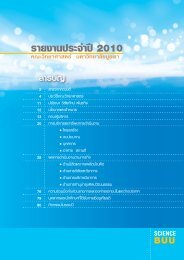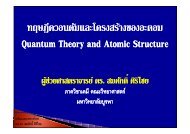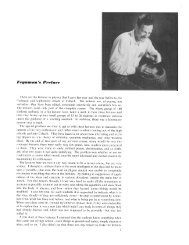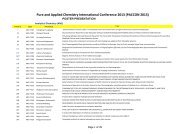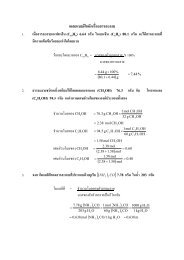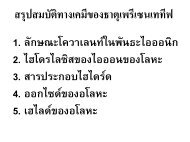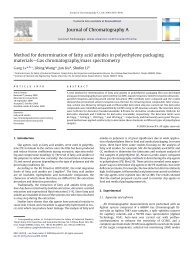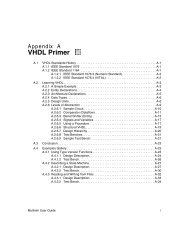USER MANUAL SWAN Cycle III version 40.72A
USER MANUAL SWAN Cycle III version 40.72A
USER MANUAL SWAN Cycle III version 40.72A
Create successful ePaper yourself
Turn your PDF publications into a flip-book with our unique Google optimized e-Paper software.
Description of commands 73<br />
‘long’<br />
[lexp]<br />
[hexp]<br />
[excv]<br />
the heading of a table written by <strong>SWAN</strong>). If this option is not used, <strong>SWAN</strong> will<br />
use a realistic name.<br />
long name of the output quantity (e.g. the name appearing in the heading of a<br />
block output written by <strong>SWAN</strong>). If this option is not used, <strong>SWAN</strong> will use a<br />
realistic name.<br />
lowest expected value of the output quantity.<br />
highest expected value of the output quantity; the highest expected value is<br />
used by <strong>SWAN</strong> to determine the number of decimals in a table with heading. So<br />
the QUANTITY command can be used in case the default number of decimals in<br />
a table is unsatisfactory.<br />
in case there is no valid value (e.g. wave height in a dry point) this<br />
exception value of the output quantity is written in a table or block output.<br />
The following data are accepted only in combination with some specific output quantities.<br />
[power]<br />
[ref]<br />
[fswell]<br />
[fmin]<br />
[fmax]<br />
power p appearing in the definition of PER, RPER and WLEN<br />
(see Appendix A). Note that the value for [power] given for PER<br />
affects also the value of RPER; the power for WLEN is independent of that<br />
of PER or RPER.<br />
Default: [power]=1.<br />
reference time used for the quantity TSEC.<br />
Default value: starting time of the first computation, except in cases where<br />
this is later than the time of the earliest input. In these cases, the time of<br />
the earliest input is used.<br />
upper limit of frequency range used for computing the quantity HSWELL<br />
(see Appendix A).<br />
Default: [fswell] = 0.1 Hz.<br />
lower limit of frequency range used for computing integral parameters.<br />
Default: [fmin] = 0.0 Hz.<br />
upper limit of frequency range used for computing integral parameters.<br />
Default: [fmax] = 1000.0 Hz (acts as infinity).<br />
PROBLEMCOORD− vector components are relative to the x− and y−axes of the problem<br />
coordinate system (see command COORD)<br />
− directions are counterclockwise relative to the positive x−axis of the<br />
problem coordinate system if Cartesian direction convention is used (see<br />
command SET)<br />
− directions are relative to North (clockwise) if Nautical direction<br />
convention is used (see command SET)<br />
FRAME<br />
If output is requested on sets created by command FRAME or automatically<br />
(COMPGRID or BOTTGRID)<br />
− vector components are relative to the x− and y−axes of the frame<br />
coordinate system (see command COORD)





